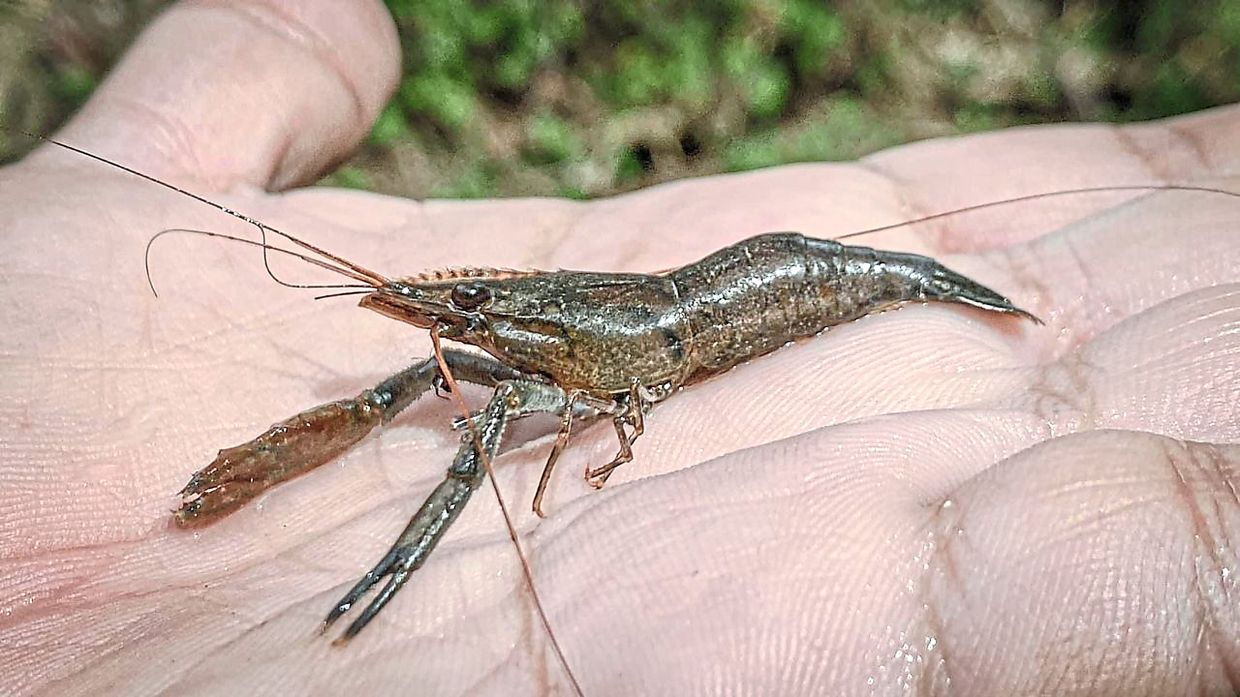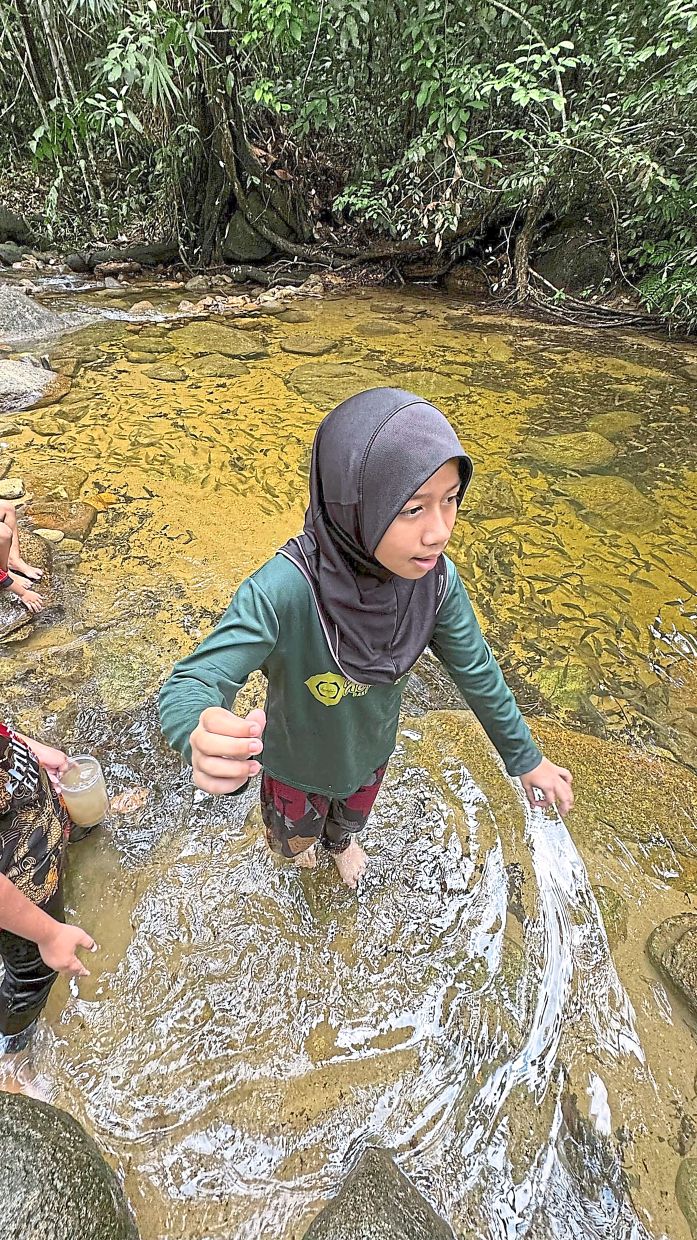A juvenile copper masheer caught in a net swimming in the glistening water.
Equip your children with fish-catching nets during a camping trip or picnic by a clear stream and you’re setting them up for hours of fun and discovery in nature.
These outdoor activities spark curiosity and teach kids about wildlife up close, transforming a simple outing into an engaging adventure.
To give them the best chance of safely exploring, get the right tools – wide, soft nets sold at aquarium shops are ideal. These nets help avoid harm to the tiny fish, shrimp and nymphs they might catch, while the fine mesh size ensures even the smallest critters aren’t missed.
“Bring a clear plastic container so they can hold and observe the wildlife they catch,” advises Jai Anis, 41, a father of four who tries his best to take his children on nature trips every week.
“If you get round containers, even better. The curved shape magnifies the animals when viewed from the side, allowing kids to see every detail and get a true sense of these creatures’ lives.”
Jai has another tip: Bring along a good camera or smartphone with close-up capabilities to capture each tiny animal in clear detail. This extra step helps children take their learning further.
“Teach your kids to use these close-up photos for a Google image search,” Jai suggests.
“It’s an easy way for them to use technology for discovery rather than just entertainment.”
Once your children find the species through an image search, they can dive into reading about the animal’s taxonomy, biology, habitat and diet, and then piece together the life stories of these miniature wonders.
This way, each discovery not only adds to their knowledge but also nurtures an appreciation and respect for nature.
“Children begin to understand how even tiny creatures are part of the ecosystem, and they develop a love for nature and the environment. It makes them more conscious of conservation and protecting the world around them,” said Jai.
Some species, like river prawns, have tens of varieties, making identification a fun and engaging challenge.
Of course, the fish and shrimp aren’t exactly lying around waiting; it takes some skill and patience to find them. Knowing how and where to look is part of the adventure.
Jai recommends teaching children to approach the stream slowly and to keep their eyes on the lookout.
“They’re likely to find fish near rock edges or under overhanging bushes dipping into the water.
“The safest method is to hold the net in one hand and a small stick in the other. Position the net close to the spot, then gently reach in with the stick to ‘tickle’ any hidden creatures out of their spot and into the net.”
When kids understand that the best catches often require patience, they’re more prepared to accept that success may take a few tries.
It’s also a chance to teach them caution in unfamiliar environments.
“I tell my kids not to reach directly into any of these spots with their hands,” Jai said.
“There could be other larger animals like turtles, small lizards or even snakes hiding there, so it’s best to let the net and stick do the work.”
Other good areas for spotting fish are around boulders and in small eddies formed by currents around the rocks. Even if the fish are visible, Jai cautioned, they’re likely to be aware of your presence.
He urges parents to help their children manage expectations and keep trying despite initial failures. With gentle encouragement, they’ll learn persistence.
For first timers, Jai recommends managed camping sites and recreational forests protected by the Forestry Department.
One of his favourite spots is Taman Eko Rimba Kledang Saiong, where the streams there are protected and fishing is off-limits, which has helped the fish feel secure around humans.
Located in Meru, just north of Ipoh, the streams are monitored by rangers. If children use little nets to explore, the rangers simply remind them to release the fish back after they’ve had a look.















